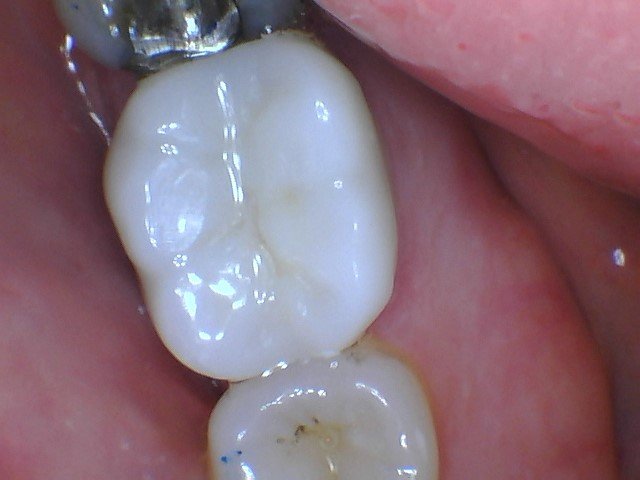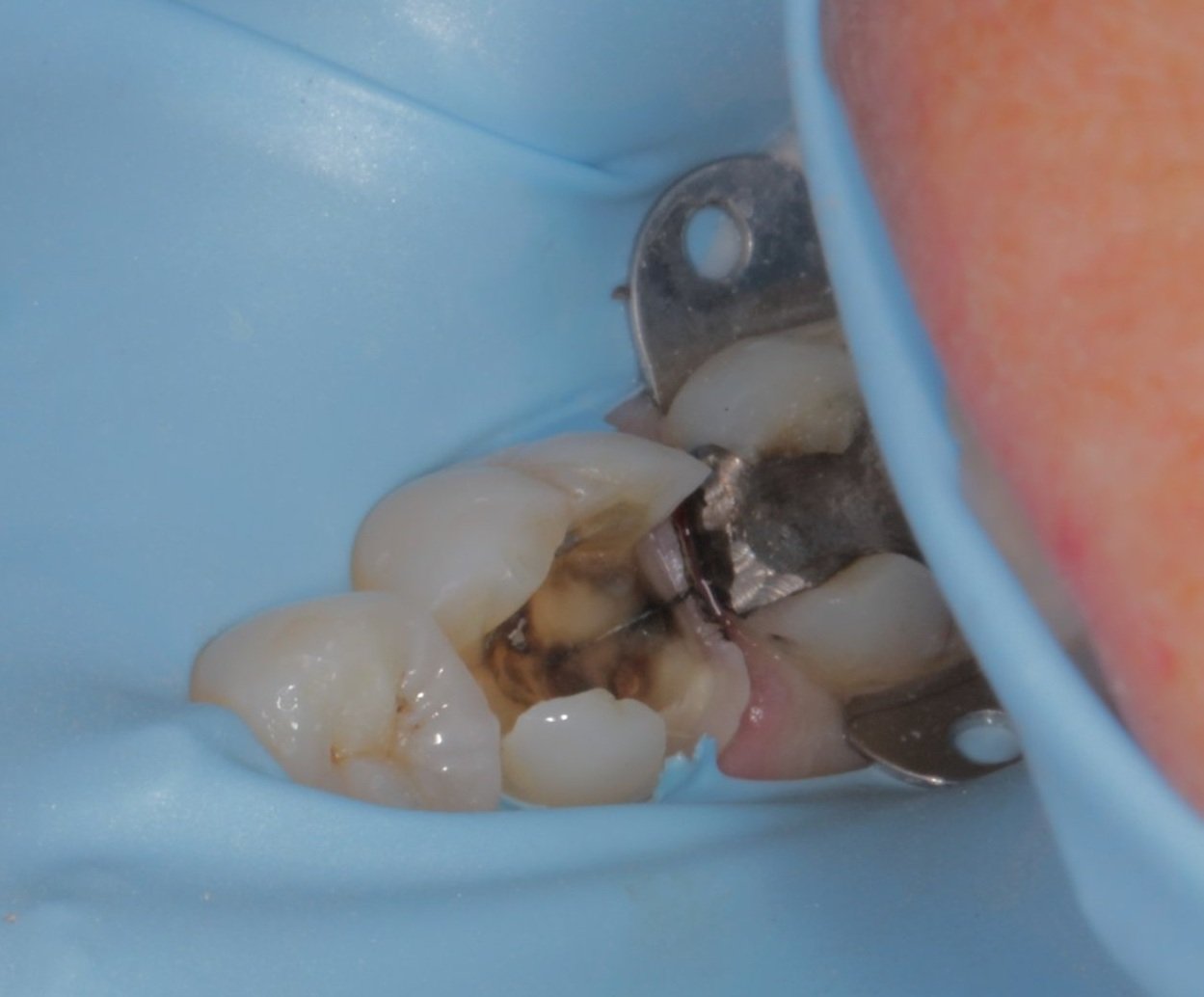The pandemic changed all of our lives in many ways, including raising our stress levels enormously. Since then, dentists all over have noted a significant increase in cracked teeth. It makes sense: Increased stress = increased clenching and grinding = increased forces on teeth = increased incidence of cracked teeth.
A patient presents with chewing pain. When the tooth is opened a crack is detected along the floor of the tooth (the black line).
I have personally seen for myself a dramatic rise. Patients will come in and say they have a particular tooth that hurts almost every time they chew. They usually describe it as a “zing” that sends them through the roof that lasts a split second, but recurs every time they eat. This is a classic presentation of a tooth with a crack.
A filling was placed over the crack as a temporary measure until our patient returned to have their crown done.
Cracks in teeth are tricky as most times, they can’t be seen visually or on a radiograph. They are hiding somewhere in the middle, usually along the floor of the tooth. Through various diagnostic tests a dentist can determine the likelihood of a presence of a crack and where it is located in the tooth.
One treatment option we may recommend is placing a crown on the tooth. A crown provides full coverage of the tooth. Now when chewing, the forces are placed on the crown rather directly on the tooth, therefore decreasing the chance of feeling pain when chewing, along with preventing the crack to propagate deeper.
At the first appointment of a crown, the tooth is shaved down to a smaller version of itself in order to make room for the crown to be placed. A margin around the tooth is created for the crown to sit.
The process for a crown usually requires two appointments. In the first appointment, we shave the tooth to a miniature version of itself in order to make room for the crown to be placed on top of the tooth. A scan is taken to send to the lab in order to fabricate the crown, as well as a shade is picked in order to ensure your crown blends in with the rest of your teeth. A temporary crown is fabricated at the end of the appointment to place on your tooth. A few days later at the second appointment, your temporary crown is removed and we cement your permanent crown. We ensure the fit and the bite of your teeth are correct. You are now a proud owner of a crown which obviously makes you royalty! (Worst dental joke ever).
Tada! A gorgeous crown is cemented on top of the tooth, protecting the crack from getting deeper and preventing chewing pain.
If you are having chewing pain then it may mean you have a cracked tooth and you need to get it checked before it worsens!
Remember, going to the dentist is not meant to be torturous. If you’re looking for an office that feels like home, the Niverville Heritage Dental Gals would love to meet you (and your teeth). Contact the office to book your appointment now! See you soon!












